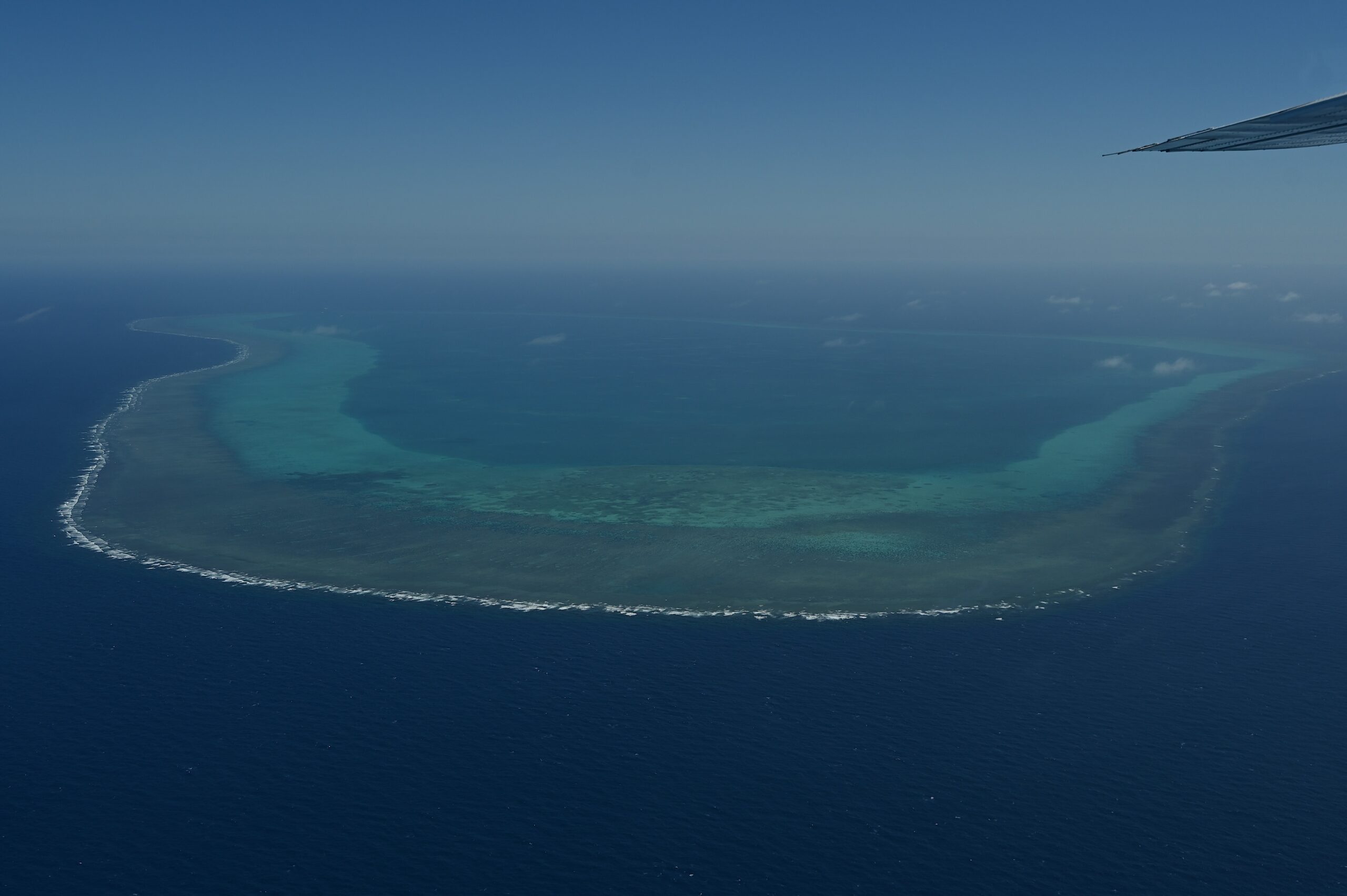PH Navy: AFP won’t be coercive amid China chopper incident

This photo taken on February 15, 2024, shows an aerial view of Scarborough Shoal in the disputed South China Sea. (Photo by JAM STA ROSA / AFP)
MANILA, Philippines — The Armed Forces of the Philippines (AFP) would not “go down to the level” of conducting “illegal actions” when confronted with one, according to an official of the Philippine Navy, pertaining to China Navy chopper’s dangerous maneuvers in Scarborough Shoal last week.
Also, Philippine Air Force spokesperson Col. Maria Consuelo Castillo explained that it is part of their mandate to provide support for Philippine aircraft in danger or distress, specifically those that receive harassment from a foreign military plane.
But, Rear Admiral Roy Vincent Trinidad, navy spokesperson for the West Philippine Sea, clarified that they would not engage in illegal actions that are “coercive.”
READ: PCG hits China Navy chopper’s ‘dangerous maneuvers’ over Scarborough
“As I mentioned earlier actions by any foreign power that endanger the lives of Filipino airmen, seamen and even our troops on the ground are actions that have no place in a civilized world,” Trinidad said in a press briefing on Tuesday.
“The AFP will not go down to the level of illegal actions when confronted with illegal actions that are coercive. We will keep performing our mandate. We will support other government agencies and ensure their lives are safe,” he added.
On February 18, a People’s Liberation Army Navy helicopter with tail number 68 conducted reckless flight maneuvers against a Bureau of Fisheries and Aquatic Resources (BFAR) aircraft, which was carrying Philippine Coast Guard (PCG) personnel and Filipino journalists.
PCG earlier reported that the Chinese chopper came as close as 3 meters to the BFAR aircraft and 10 meters a few minutes later.
Based on PAF’s training, Castillo said they usually maintain “one to two wingspan distances” between two aircraft.
“[This] means that if the wingspan of an aircraft is around 30 feet then the smallest safest distance you can go near another aircraft if you plan to go near, or fly alongside it, should be one wingspan or around 10 meters. So you can’t go near that, that’s the safest,” she explained.
“For helicopters, we usually maintain the closest formation. For a helicopter to go near another helicopter is around two router distances. So around 20, if the router distance is around 30 plus, it should be around 20 or more meters away from another aircraft,” Castillo noted.
“So definitely, allegedly if that helicopter that went near the BFAR aircraft went less than 10 meters then that’s an unsafe distance,” she pointed out.
Since January this year, the PCG has also been monitoring the movements of Chinese Coast Guard vessels unlawfully operating within the country’s exclusive economic zone and near Zambales.
Beijing’s continued aggression was based on its assertion of sovereignty over almost the entire South China Sea, including most of the West Philippine Sea, as it continues to reject the 2016 arbitral ruling that effectively dismissed its claims and ruled in favor of Manila. With reports from Keith Irish Margareth Clores, INQUIRER.net trainee


















